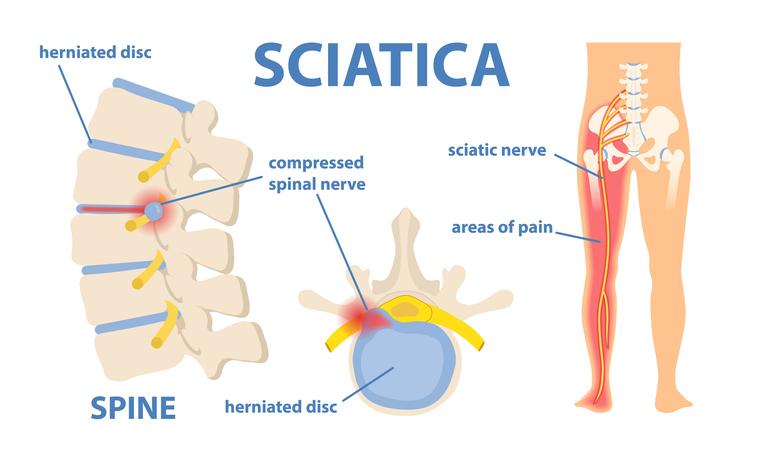Pain
Diagnosing Sciatica

142 people found this helpful
Print
Share
Save
What is sciatica?
Sciatica, or sciatic nerve pain, refers to pain that occurs when the sciatic nerve root in the lower back becomes compressed, irritated or inflamed. Sciatic nerve pain radiates from the lower back, into the buttocks, and down the legs. It is most commonly the result of a herniated or slipped disc, bone spurs, or spinal stenosis.
Diagnosing sciatica
Diagnosing the underlying cause of sciatica is essential in managing pain and implementing an appropriate treatment plan. A physician will ask questions, obtain a medical history, and complete a physical examination. Medical imaging tests and a diagnostic nerve block may also be conducted if necessary.
- Questions may include the level of pain experienced, movements or activities that worsen or relieve pain, and location of the pain.
- A medical history reviews the pain onset, type (e.g., shooting, burning, etc.) and duration. It also includes any injury (previous or current) of the back or hip area, muscle spasms or cramps in the pelvic region, and leg strength.
- A physical examination will evaluate range of motion, muscle strength, and reflexes. Individuals will likely be asked to walk normally, walk on the toes or heels, and rise from a squatting or sitting position.
A straight leg raise (SLR) test may be performed, in which the individual lies on the back as the physician slowly raises each leg. This determines the location of pain.
A slump test includes an individual sitting upright with the hands behind the back. Slumping forward at the hip helps determine where pain bgins. - Medical imaging tests may include X-rays, MRI, or CT scan. A myelogram, electromyography (EMG), or discogram may also be performed.
- A diagnostic nerve block involves an anesthetic solution being injected around the sciatic nerve root(s) to numb the pain. Sciatica may be confirmed if pain relief occurs.


















